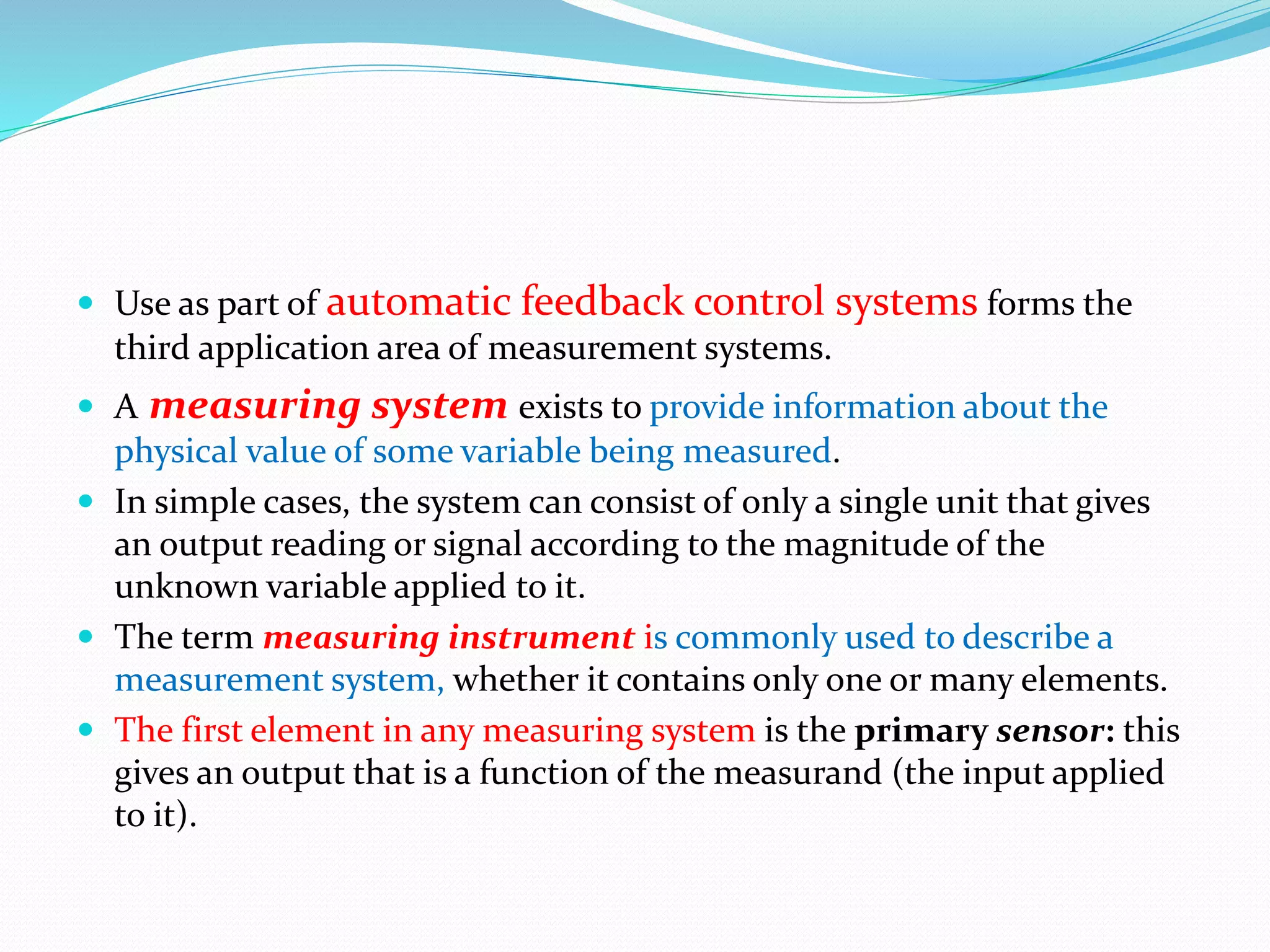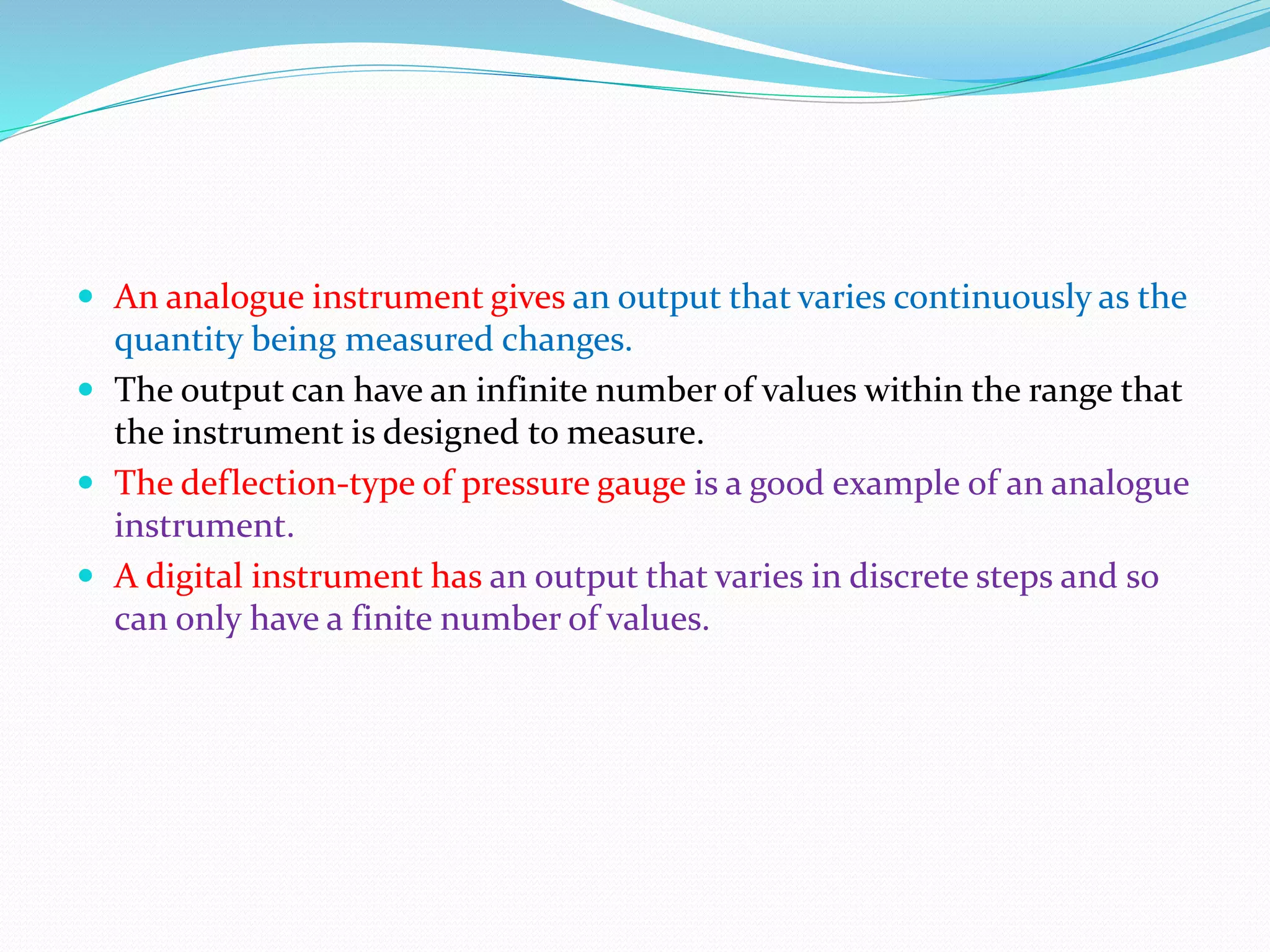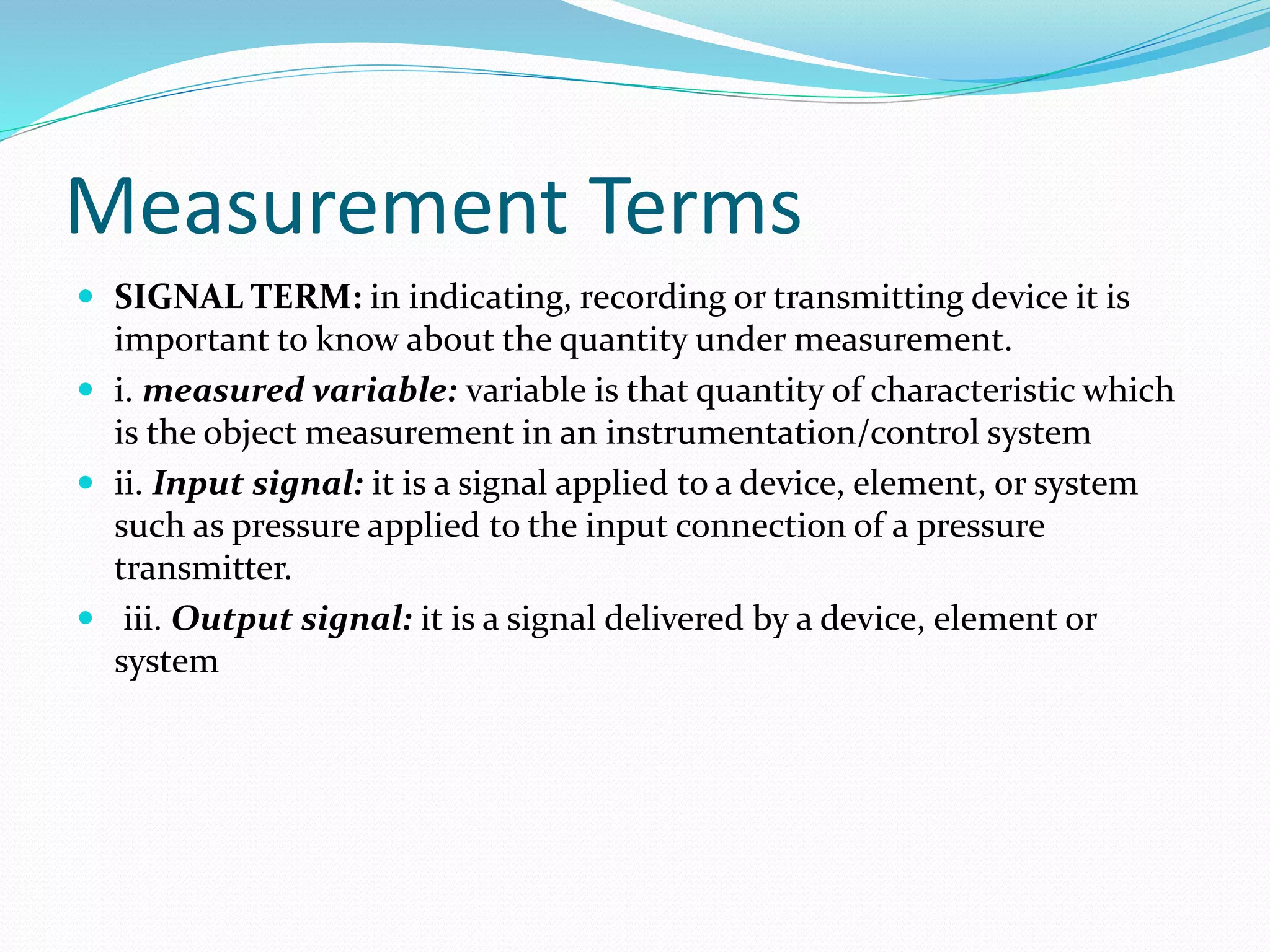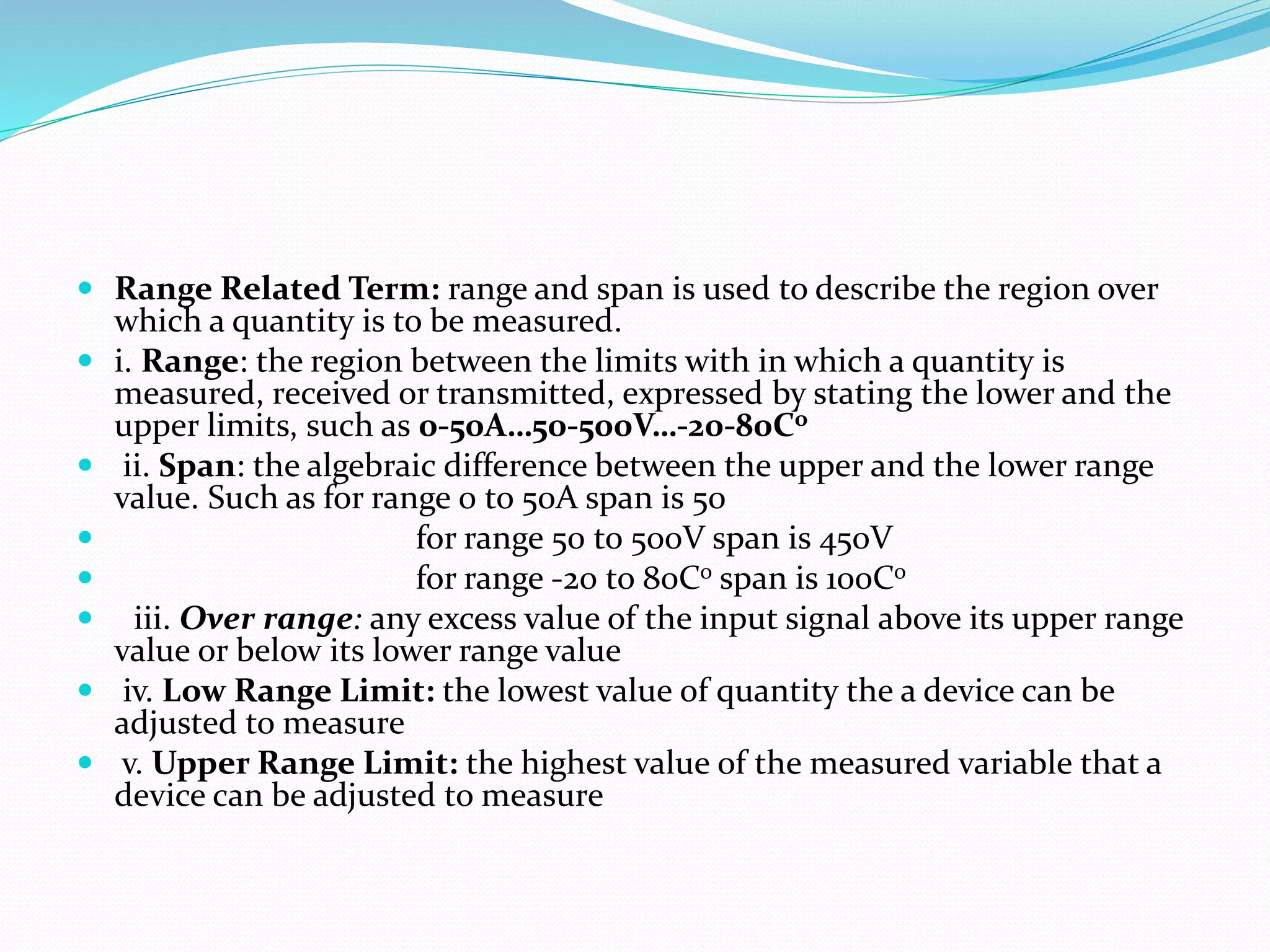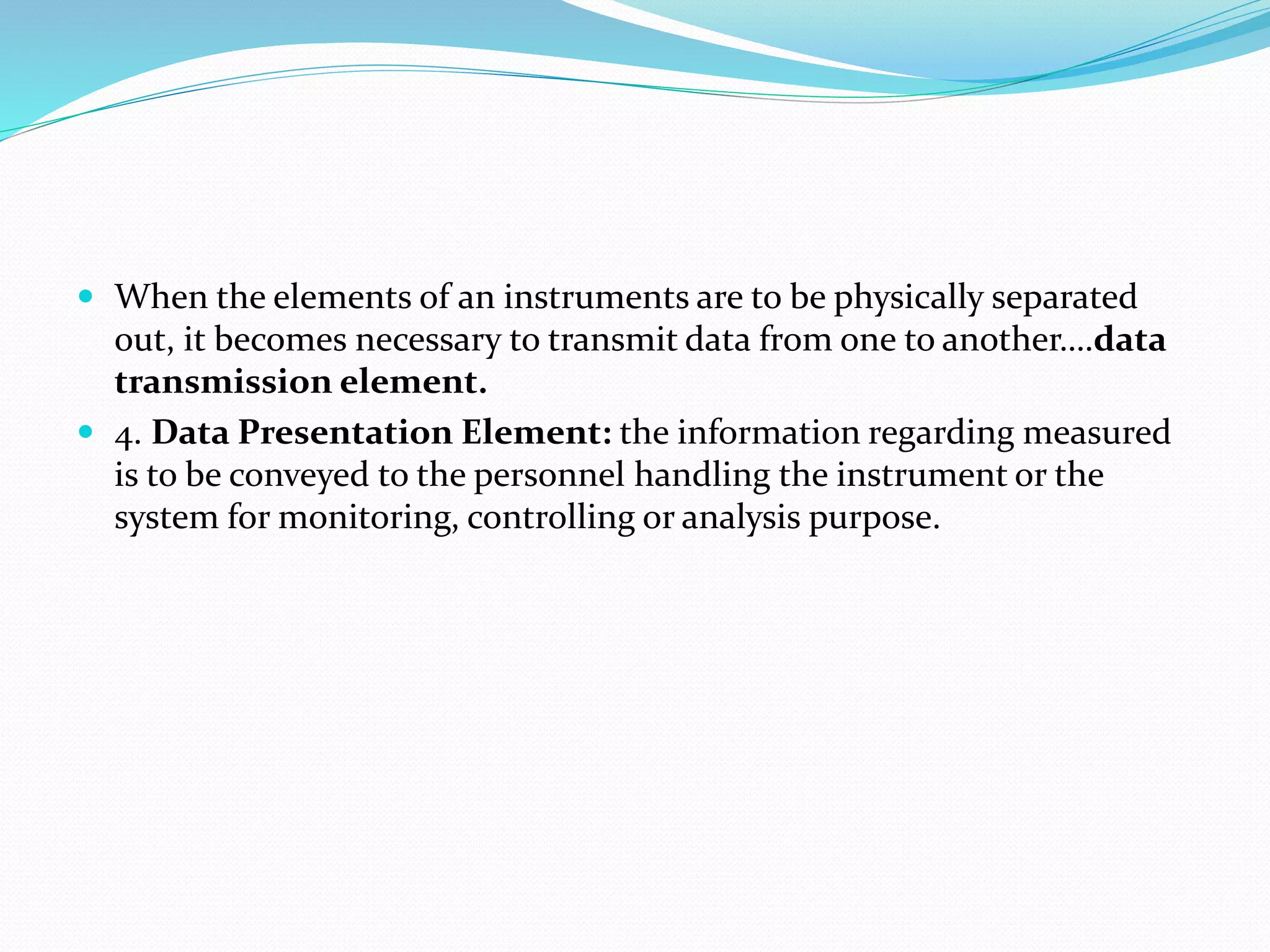This document provides an overview of instrumentation systems and measurement concepts. It discusses key elements of measurement systems including primary sensing elements, variable conversion elements, and signal processing elements. It also defines important measurement terms like range, accuracy, sensitivity and resolution. Measurement techniques are classified as analog or digital systems. The roles of instrumentation systems in process monitoring and automatic control are introduced.





